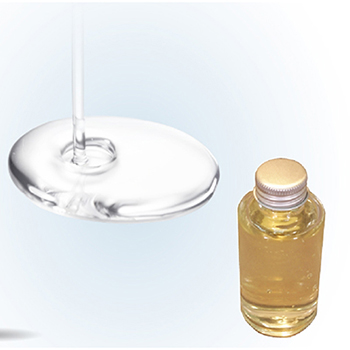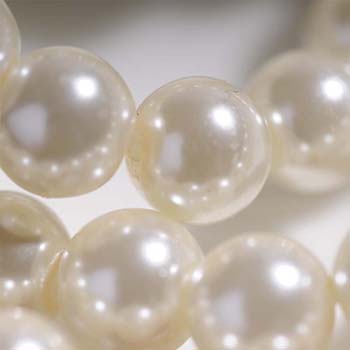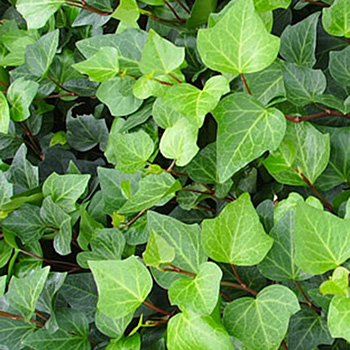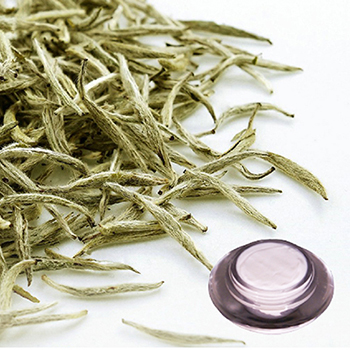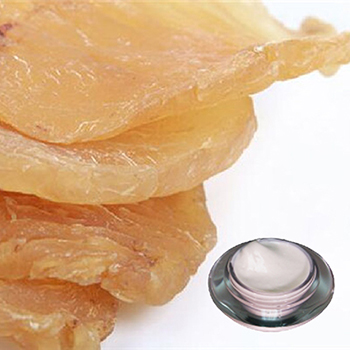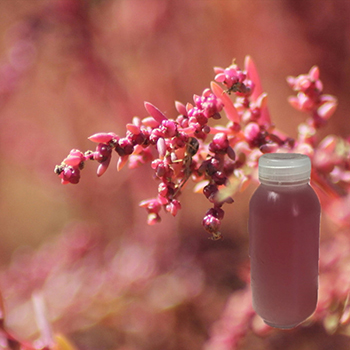目前購物車內沒有商品

Overview
During the Middle Ages, burdock was valued for treating a host of ailments. English herbalists used burdock root for boils, scurvy (a disease caused by vitamin C deficiency, leading to bleeding, gum disease, and weakness), diabetes, and rheumatism (disorders characterized by joint discomfort and loss of mobility). Burdock also played an important role in Native American herbal medicine, and American herbalists have used the roots and seeds of this plant for two centuries.
Burdock root has been traditionally used as a "blood purifier" to clear the bloodstream of toxins, as a diuretic to promote the excretion of urine, and as a topical remedy to relieve skin problems. In folk medicine, burdock has also been used as a laxative and to relieve inflammatory conditions such as arthritis. Plus, there is belief that burdock may be helpful for kidney stones.
Despite the fact that burdock has been used for centuries to treat a variety of conditions, few (if any) scientific studies have proven that this herb is a safe and useful remedy. Still, many professional herbalists find burdock helpful for skin and scalp conditions (including acne, psoriasis, eczema, contact dermatitis, and wounds) and inflammatory conditions such as osteoarthritis, rheumatoid arthritis, and gout. Preparations of burdock root are also used to promote perspiration and the excretion of urine and to treat ailments and complaints of the digestive system. Extracts of burdock root are found in a variety of herbal preparations as well as homeopathic remedies.
Burdock, a root native to Europe and Asia, is the main source for a variety of herbal preparations. Burdock root tastes sweet and its texture is sticky. Burdock has been used as remedy for both fevers and colds, urinary tract infections, and rheumatism, although clinical evidence of its effectiveness for treating these conditions is lacking. Burdock has also been employed as a diuretic and more recently has been used as a tea in the treatment of cancer and a number of other maladies.
Burdock has been a favorite medicinal herb for centuries and is used for many ailments. Burdock root oil extract, also called Bur oil, is popular in Europe as a scalp treatment applied to improve hair strength, shine and body, help reverse scalp conditions, combat hair
loss. It is used as a natural hair oil to help get rid of scalp itching and dandruff, promote healing of skin and scalp conditions. Modern studies indicate that Burdock root oil extract is rich in phytosterols and essential fatty acids (including rare long chain EFAs), the nutrients required to maintain healthy scalp and promote natural hair growth. Regular use of Burdock oil helps restore and maintain healthy scalp and hair. The oil helps combat scalp itching, redness and dandruff, promotes recovery of scalp irritation. It combines immediate relieving effect with nutritional support of normal functions of sebaceous glands and hair follicles.
Plant Description
Burdock is a common weed native to Europe and Northern Asia and is now widespread throughout the United States as well. A member of the thistle family, burdock is a stout, common weed with hooked bracts (leaf-like part of the plant) or burrs that adhere to clothing or animal fur. The burdock plant grows to a maximum height of approximately three to four feet. It has purple flowers that bloom between the months of June and October. Burdock has alternate (meaning that the leaves grow on both sides of the stem at alternating levels), wavy, heart-shaped leaves that are green on the top and whitish on the bottom. The deep roots (used primarily for medicinal purposes) are brownish-green, or nearly black on the outside.
Burdock grows well in the wild. It thrives in light, well-drained soil. Herbalists usually collect burdock leaves during the first year of growth, and harvest the roots in the fall of the first year after planting (or during the following spring before the flowers bloom).
It contains many vitamins and minerals (Vitamins B1 , B6, B12 and E, calcium, iron, potassium, sulfur, silica and manganese).
What's It Made Of?
Burdock consists primarily of carbohydrates, volatile oils, plant sterols, tannins, and fatty oils. It is not entirely clear which active ingredients in burdock root are responsible for its healing properties, but the herb may have anti-inflammatory, antioxidant, and disinfectant properties.
Available Forms
Burdock products typically consist of fresh or dried roots. Burdock can be purchased as a dried root powder, decoction (liquid made by boiling down the herb in water), tincture (a solution of the herb in alcohol, or water and alcohol), or fluid extract.
Historical Uses of Burdock Root
"alternative" and a "blood purifier." The burdock root was believed to clear toxins from the bloodstream. It may be applied externally as well as internally to relieve eczema and psoriasis. Additionally, it may ease painful joints or act as a diuretic. Ancient Chinese medicine combined burdock root with other herbs to treat colds, measles, sore throats, and tonsillitis. And the Japanese consume burdock root as a vegetable.
The primary active constituents in burdock include arctigen, calcium, chlorogenic acid, essential oil, flavonoids, iron, inulin, lactone, mucilage, polyacetylenes, potassium, resin, tannin, and taraxosterol. Fatty acids are contained in the seeds. Burdock seed oil may work as a diaphoretic, creating sweat, neutralizing and eliminating the body's toxins. The high amounts of inulin and mucilage in this herb likely explain why burdock exhibits soothing effects on the gastrointestinal tract.
Burdock may provide a good source for minerals such as iron, the carbohydrate inulin, and essential oils. Additionally, burdock may serve as a mild laxative and assist in the elimination of uric acid. The herb contains polyacetylenes that have antibacterial and antifungal properties. By improving the function of many organs of elimination (i.e. liver, kidneys, bowels), many health conditions may be moderately corrected.
Burdock is usually available in combination with other herbs as a tea, in tinctures, and in capsule form. Burdock is an effective diuretic, and is considered a very safe herb and food product as long as the root is pure. Reported cases involving toxic effects were first thought to be caused by the consumption of burdock tea, but were later determined to be caused by contamination of the burdock root with belladonna root, which contains atropine. Therefore, consider the source and quality prior to purchasing burdock root.
Historical Uses of Burdock Root
Burdock root has often been used to purify the blood by removing toxins that can build up in blood. It can be taken orally or used topically as a remedy for skin disorders. Also, burdock root can be a diuretic or soothe aching joints. Traditional Chinese healers used burdock root in combination with other plants to make cures for colds, measles, throat pain, and tonsillitis. Burdock root was also popular in Japan as a source of vitamins and other nutrients. In modern times, burdock root has been employed in the treatment of certain cancers. However, this use of burdock root still needs to be systematically tested.
Historically, the seeds of the burdock plants were compressed to make a mixture that was effective in cleansing the bloodstream, easing pain from arthritis, and treating gout, rheumatism, ulcers, acne, eczema, and psoriasis. Its cancer-curing properties were also utilized in Russia and India. The Chinese used it as an aphrodisiac, and found it effective in treating barrenness and impotence.
Burdock’s active ingredients are arcigen, calcium, chlorogenic acid, essential oil, flavonoids, iron, inulin, lactone, mucilage, polyacetylenes, potassium, resin, tannin, and taraxosterol. The seeds of the plant contain beneficial fatty acids. The oil from the seeds can be used as a diaphoretic, which leads to increased perspiration, which is essential in cleansing the body of toxins or harmful elements. According to traditional healers, diaphoretics are integral to treating influenza, gallbladder or liver disorders, and to aid the kidneys which purify the blood.
Burdock root is eaten as a vegetable in many places. It has many nutrients like iron, inulin (a carbohydrate), and beneficial oils. Also, burdock can be used as a gentle laxative and help eradicate uric acid. Some of the active ingredients of burdock are polyacetylenes, which are known to be effective antibacterials and antifungals. Burdock enhances the performance of many of the organs which purify the body and eliminate toxins or waste (like the kidneys, liver, colon, etc). This enhances overall health and helps correct disorders.
Burdock is easily obtainable as an ingredient in teas, ointments, or pills. It is a powerful diuretic, and is safe to be taken internally, externally, or as food. However, it is important to make sure that the herb is pure. Some reports have indicated that burdock could have toxic properties, since cases of illness were reported that involved burdock tea. However, further analysis showed that the negative effects were the result of impure burdock root. Some belladonna, which contains atropine, had contaminated the burdock root. It is important to look at the source and purity of burdock root before obtaining it.
How to Take It
Pediatric
There are no known scientific reports on the pediatric use of burdock, but some herbal specialists have used this herb safely in children over three years old. (Burdock is commonly used in combination with other cleansing herbs such as dandelion.)
Adult
Topical preparations of burdock are also used for skin problems (such as eczema) and wounds. There is not a standard topical dose for these purposes, but a poultice made from mashed, cooked herb and root can be applied to the affected area as a wet paste. When wrapped in place, the poultice draws out infection and toxins under the skin. Poultices should be applied twice daily.
Precautions
The use of herbs is a time-honored approach to strengthening the body and treating disease. Herbs, however, contain active substances that can trigger side effects and that can interact with other herbs, supplements, or medications. For these reasons, herbs should be taken with care, under the supervision of a practitioner knowledgeable in the field of botanical medicine.
Some individuals who handle burdock may experience an irritation of the skin.
Pregnant or nursing women should avoid burdock as it may cause damage to the fetus.
It is best to avoid taking excessive amounts of burdock (especially burdock root) as the toxic effects of this herb are not well understood.
Although in folk medical practices it is believed that burdock lowers blood sugar and may help with diabetes, there is one animal study that suggested that this herb aggravated experimentally-induced diabetes in rats. It is not clear whether this same concern would apply to people.
Because the roots of burdock closely resemble those of belladonna or deadly nightshade (Atropa belladonna), there is a risk that burdock preparations may be contaminated with these potentially dangerous herbs. Be sure to buy products made by established companies with good reputations, and who distribute their products through trustworthy and knowledgeable establishments. Whenever possible, select products with guaranteed potency or standardized extracts.
Possible Interactions
Although preliminary reports suggest that burdock may lower blood sugar, there are no known scientific reports of interactions between burdock and conventional medications, including medicines used for diabetes.
Plant parts used:Root、Leaves
Side Effects:
None known other than a mild constipation in some rare individuals.
Internal uses for Burdock:
1. Aperient (mild laxative)
2. Cholagogue (Increases flow of bile into intestines)
3. Diaphoretic (promotes perspiration)
4. Diuretic
5. Liver
6. Stomach
7. Bone and Joint problems
External use as a wash or application of leaves.
8. Acne
9. Eczema
10. Poison Ivy Rash
11. Poison Oak Rash
Burdock has been used for many medicinal treatments in folk medicine for ages.. It was listed as an official medicine in an early U.S. Pharmacopoeia. The herb has been used for boils, fevers, inflammations, hepatitis,and swollen glands. Burdock has also been used for respiratory infections. It has been used for joint pain and rheumatoid arthritis.
The biggest use is for skin problems such as: dry skin, eczema, psoriasis, acne, and abscesses. It is best for chronic, non-acute skin, sweat, and sebaceous gland problems. For these conditions it can be taken internally or applied as a poultice. It is suggested that it can be used for teenage acne if taken over several weeks. The leaves of burdock can be used fresh on poison ivy and oak rashes.The oil of the seeds can be applied to skin eruptions and burns. Its main action is soothing and softening of the skin.
The leaves can be crushed and applied to bruises, swellings, hemorrhoids, and chronic sores. The leaves also can be applied to sore feet.
The root promotes all secretions. It is an aperient (laxative), diuretic (increases urine flow), and a diaphoretic (increases perspiration, sweating).
It has been used in fasting to maintain the peristaltic contractions of the intestine. This is due to the large amount of fiber in the plant.
A tea made of the leaves of Burdock is used for indigestion. The seed's taste is sweet, mucilaginous, and slightly bitter.The tincture of the seed is used as a stomach tonic.
This plant has been used for cancerous growths, even back in the Middle Ages. In more recent times it was the main ingredient in the Hoxsey cancer treatment. The FDA shut down the clinic using this cure and interestingly, the founder of the clinic and cure, Harry Hoxsey died of cancer. Burdock is also found in the the Essiac herbal treatment used for cancer treatment.
The problem is that in what research has been done on Burdock there is no good evidence that it helps in these conditions. However there is research being done on 2 chemicals found in burdock, arctigenin and arctiin, that show some action on cancerous cells.
As an alterative (causes a favorable change in condition), it is used for cleansing the blood and for gouty conditions. The action of cleansing the blood is also used to reduce cancers. In these uses, the herb is used fresh. The underlying action of Burdock is that the root acts to eliminate and neutralize toxins in the liver and blood stream. Used with dandelion, it is considered to be a good blood purifier. It is suppose to act as a diuretic, soothing the kidneys. It also has a mild laxative action.
Homeopathic use:
It is used for skin problems of the head, face, neck hands and feet. For styes and ulcerations on the edges of the eyelids. For pain of elbows and ankles that radiates down toward the fingers and toes. It is also used for displaced uterus and over relaxation of the pelvic tissues. Talk with a homeopathic practitioner for correct diagnosis and prescribing.
Dose - tincture, of the 3rd potency.
In Ayurvedic medicine, burdock is used as a lung tonic, especially in the Pitta type problems where there is high fevers, sore throats, red face. It is a cooling herb.
In Chinese medicine the herb's energy is cold, bitter, pungent
